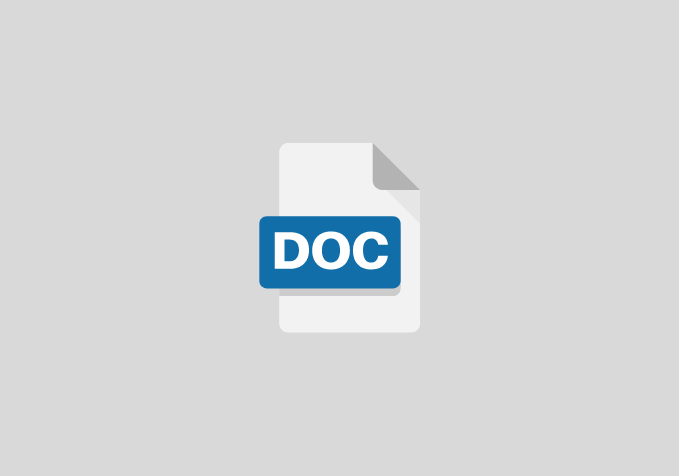The Impact of Infectious Epidemic on Agriculture and Food Security: a Case Study of Corona Virus Disease
CHAPTER ONE
Objectives of the Study
The objectives of the study are;
- To ascertain the effect of COVID19 on agriculture
- To ascertain the relationship between COVID19 and food security
- To ascertain whether COVID19 restrict agricultural activities
Research hypotheses
HO: there is no relationship between COVID19 and food security
HI: there is relationship between COVID19 and food security
Hypothesis Two
HO: there is no effect of COVID19 on agriculture.
HI: there is effect of COVID19 on agriculture
CHAPTER TWO
REVIEW OF RELATED LITERATURE
Coronavirus
Coronavirus disease (COVID-19) is an infectious disease caused by a newly discovered coronavirus.
Most people infected with the COVID-19 virus will experience mild to moderate respiratory illness and recover without requiring special treatment. Older people, and those with underlying medical problems like cardiovascular disease, diabetes, chronic respiratory disease, and cancer are more likely to develop serious illness.
The best way to prevent and slow down transmission is be well informed about the COVID-19 virus, the disease it causes and how it spreads. Protect yourself and others from infection by washing your hands or using an alcohol based rub frequently and not touching your face.
The COVID-19 virus spreads primarily through droplets of saliva or discharge from the nose when an infected person coughs or sneezes, so it’s important that you also practice respiratory etiquette (for example, by coughing into a flexed elbow).
At this time, there are no specific vaccines or treatments for COVID-19. However, there are many ongoing clinical trials evaluating potential treatments. WHO will continue to provide updated information as soon as clinical findings become available.
CHAPTER THREE
RESEARCH METHODOLOGY
Research design
The researcher used descriptive research survey design in building up this project work the choice of this research design was considered appropriate because of its advantages of identifying attributes of a large population from a group of individuals. The design was suitable for the study as the study sought the impact of infectious epidemic on agriculture and food security: A case study of Corona virus disease.
CHAPTER FOUR
PRESENTATION ANALYSIS INTERPRETATION OF DATA
Introduction
Efforts will be made at this stage to present, analyze and interpret the data collected during the field survey. This presentation will be based on the responses from the completed questionnaires. The result of this exercise will be summarized in tabular forms for easy references and analysis. It will also show answers to questions relating to the research questions for this research study. The researcher employed simple percentage in the analysis.
CHAPTER FIVE
SUMMARY, CONCLUSION AND RECOMMENDATION
Introduction
It is important to ascertain that the objective of this study was to ascertain the impact of infectious epidemic on agriculture and food security: A case study of Corona virus disease. In the preceding chapter, the relevant data collected for this study were presented, critically analyzed and appropriate interpretation given. In this chapter, certain recommendations made which in the opinion of the researcher will be of benefits in addressing the challenges of infectious epidemic on agriculture and food security
Summary
This study was on The impact of infectious epidemic on agriculture and food security: A case study of Corona virus diseases. Three objectives were raised which included: To ascertain the effect of COVID19 on agriculture, to ascertain the relationship between COVID19 and food security and to ascertain whether COVID19 restrict agricultural activities. In line with these objectives, two research hypotheses were formulated and two null hypotheses were posited. The total population for the study is 200 staffs of ministry of agriculture in Abuja. The researcher used questionnaires as the instrument for the data collection. Descriptive Survey research design was adopted for this study. A total of 133 respondents made administrative staffs, directors, senior staffs and junior staffs were used for the study. The data collected were presented in tables and analyzed using simple percentages and frequencies
Conclusion
The pandemic called COVID-19 disease has a great impact on the actions and activities of humanity, agriculture is not outside this impact. Food demand and thus food security are greatly affected due to mobility restrictions, reduced purchasing power, and with a greater impact on the most vulnerable population groups. As cases of contagion increase, governments take more drastic measures to stop the spread of the virus, also influencing the global food system. The premise of any measure adopted should be to protect the health and food security of the population, to the detriment of economic growth, although some governments go in the opposite direction
Recommendation
Fighting against COVID-19 spreading, including sharing the information of the disease transmission and epidemiological knowledge, sharing the experiences on case management and treatment approaches both for severe cases or light symptoms, and sharing new technologies or strategies to contain the transmission
References
- Abdelhedi, I.T.; Zouari, S.Z. 2020. Agriculture and Food Security in North Africa: a Theoretical and Empirical Approach. Journal of the Knowledge Economy (in press).
- Arndt, C.; Lewis, J.D. 2001. The HIV/AIDS pandemic in South Africa: Sectoral impacts and unemployment. Journal of International Development 13(4): 427-449.
- Bermejo, A. 2004. HIV/AIDS in Africa: International responses to the pandemic. New Economy 11(3): 164-169.
- Burgui, D. 2020. Coronavirus: How action against hunger is responding to the pandemic. Available in: https://www.actionagainsthunger.org/story/coronavirus-how-action-against-hunger-responding-pandemic
- Burnet, M.; White, D.O. 1972. Natural history of infectious disease. 4th ed. Cambridge, United Kingdom: Cambridge University Press. 279 pp.
- Chen, S.; Brahma, S.; Mackay, J.; Cao, C.; Aliakbarian, B. 2020. The role of smart packaging system in food supply chain. Journal of Food Science 85(3): 517-525.
- Du, N.; Yang, X.X.; Yang, L.; Zeng, Y.H.; Zou, S.M.; Bo, H.; Guo, Y.J.; Li, D.X.; Shu, Y.L. 2009. Review on the etiological property of 1957 Asian flu virus (H2N2). Chinese Journal of virology 25: 12-16.


